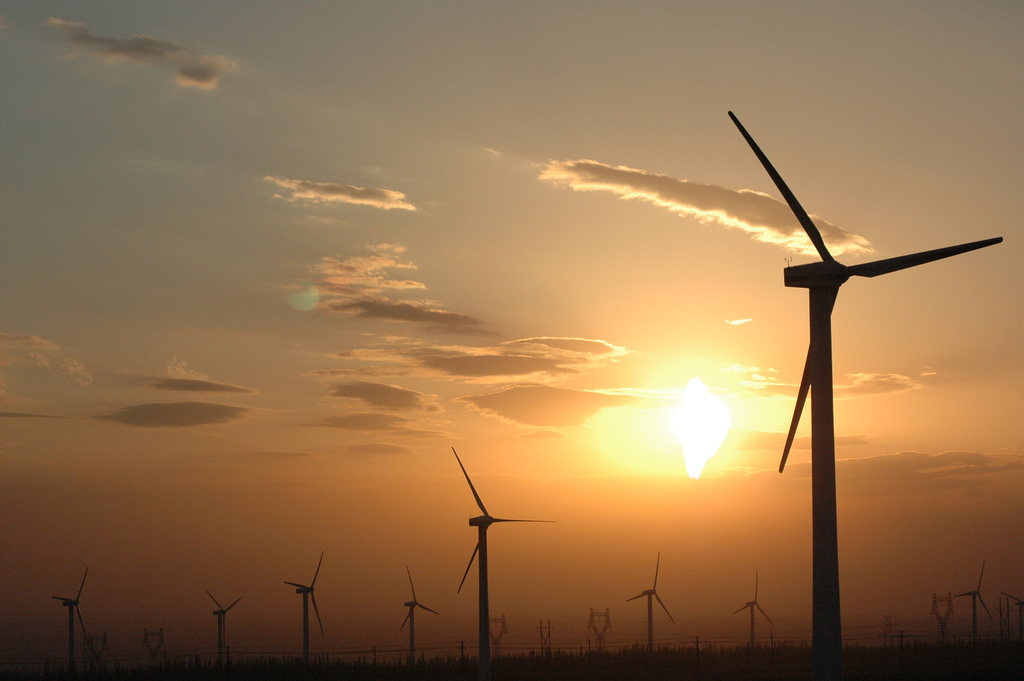Giant technology companies who deliver much of their services via “cloud” computing – such as Apple, Google, and Facebook – have claimed for years that they generate the massive amounts of electricity they need from renewable sources, despite their obvious dependence on fossil fuels.
For example, Apple has said it has “achieved 100 percent renewable energy at all of our data centers,” but as NLPC has reported and an investigation by liberal Web site Truthout.org confirmed, Apple does not power its servers with “green” alternative energy. Instead – as in the case with its western North Carolina facility – Apple sells the power from the solar farms and fuel cells it owns in NC to utility Duke Energy, and also buys renewable energy certificates (or “indulgences”) to “offset” the carbon dioxide emissions its electricity produces.
“Purchasing offsets is not the same as actually powering something with renewable energy,” wrote Truthout reporter Nicki Lisa Cole. “The big difference lies in the very real carbon dioxide emissions that are created by the operation of this data center.”
And now another similar claim by a major online company has been debunked. For months online retail company Amazon has said it will purchase electricity from a planned wind farm in northeastern North Carolina, built by Iberdrola Renewables. But the scheme is similar to that of Apple’s in western North Carolina.
According to a report by Carolina Journal (published by the conservative John Locke Foundation), the “Amazon” wind farm – which would cover about 20,000 acres across two counties – would deliver its electricity to a grid operated by PJM Interconnection, a regional operator. Meanwhile the facility that Amazon claims would be “powered by” the wind farm – a data center it operates in Ashburn, Va., outside Washington, D.C. – would actually draw electricity from Dominion Virginia Power. A spokesman for the utility said, “This venture by Amazon does not involve us.”
So rather than run its extensive banks of computer servers on undependable wind turbines 260 miles away in a remote rural area of another state, Amazon will assure the machines hum along without interruption on power generated by Dominion’s mostly nuclear, coal, and natural gas sources.
“Amazon is one of many companies making misleading claims about how their facilities and operations are powered,” said Travis Fisher, an economist with the nonprofit Institute for Energy Research, to Carolina Journal. “Wind and solar power are expensive and unreliable energy sources and can’t be counted on to supply on-demand electricity.”
Indeed, common sense dictates that the intermittency of wind power would never meet the nonstop, round-the-clock electricity demands of “cloud” computing companies. Yet Apple, Google, Facebook, Amazon and others regularly tout their “green” alternative energy credentials.
They seek the publicity, at least in part, because environmental pressure groups have waged campaigns against them over their dependence on (mostly) coal-fired power, which they say creates the most greenhouse gas emissions that they say causes global warming. Carolina Journal noted that two Greenpeace reports, in 2012 and 2014, rated Amazon poorly in its efforts to operate a “green Internet.”
There are many environmental groups keeping score on corporations’ energy use – some of which are also shareholder activists. In December 2011 National Legal and Policy Center reported how corporate America struggled to keep up with all the sustainability demands of eco-activists.
“There are many, many ratings out there,” said Suzanne Fallender of Intel’s corporate responsibility office. “More every year.”
Inconsistencies in criteria across groups’ grading evaluations are problematic too. In 2011 both Greenpeace and a project called “Climate Counts” publicized energy use rankings for the major technology companies. On Greenpeace’s score sheet Amazon turned out third-best; but according to Climate Counts, Amazon was the worst.
When confronted by Carolina Journal with questions about how its Virginia data center consumes and pays for its power, an Amazon spokeswoman refused to disclose any details. Yet the company, its wind turbine manufacturer, and several media outlets spread far and wide the lie about North Carolina wind powering northern Virginia computer servers.
“We cannot find a single instance of a large company actually going ‘100 percent renewable,'” wrote Fisher, the Institute for Energy Research economist, in a report earlier this year. “The reality is that as long as these companies are connected to the electric grid, they still get the vast majority of their electricity from conventional sources such as coal, natural gas, and nuclear power, and are therefore not 100 percent renewable.”
Paul Chesser is an associate fellow for the National Legal and Policy Center and publishes CarolinaPlottHound.com, an aggregator of North Carolina news.
[Originally published at the National Legal and Policy Center]





